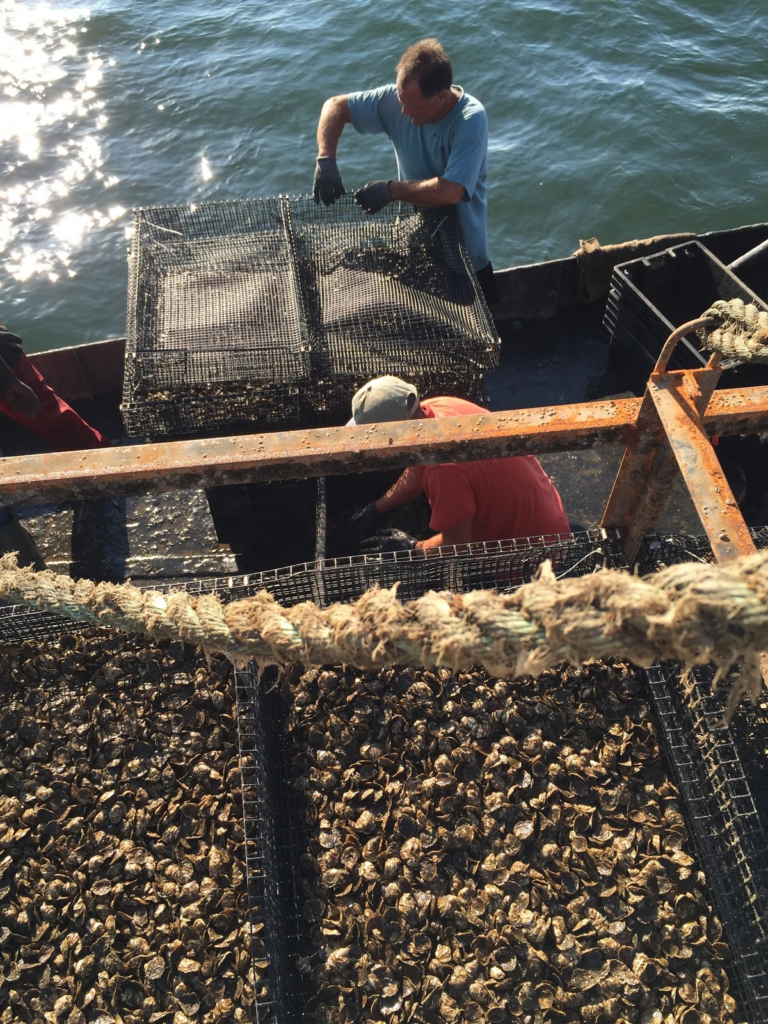

Nitrogen is a nutrient that comes from many different sources, including agriculture, fertilizers, septic systems, and treated wastewater. In excess it fuels algal growth, which can affect both water quality and human health. Shellfish can be a valuable part of a community’s nutrient management plan because they efficiently take up nitrogen.
Using a transferable replacement cost methodology, the researchers found that replacing the nutrient removal benefits of shellfish aquaculture in Greenwich, Connecticut, with traditional engineered nutrient reduction strategies would cost between $2.8–5.8 million per year. The estimate assumes use of a combination of wastewater treatment improvements, septic system upgrades, and stormwater best management practices in proportion to the local nitrogen sources.
Shellfish aquaculture removes approximately nine percent of the total locally-deposited nitrogen from Greenwich Bay annually, or about 31,000 pounds of nitrogen per year. The percentage removed is even greater when considering only nitrogen from nonpoint sources (16%), fertilizer (28%), or septic sources (51%).
The team developed two ways to estimate the value of nitrogen removal via shellfish aquaculture. One is appropriate for a well-established shellfish aquaculture industry and estimates nitrogen removal from the annual harvest. The second allows ecosystem managers to project the nitrogen removal of a new or growing industry. This novel approach can be applied to other coastal communities wishing to reduce nutrients to improve water quality.
Partnerships with two local shellfish growers, Atlantic Clam Farms and Stella Mar Oyster Company, were crucial to this study. The companies provided data on their annual shellfish harvest and local aquaculture practices, which researchers used to model the amount of nitrogen removed.
The approach detailed in this study can be applied to other communities wishing to reduce nutrients to improve water quality. Even without a local shellfish aquaculture industry, decision makers will find the study useful in understanding the environmental benefits of shellfish to their coastal waters.
The study is published in Environmental Science and Technology. View the NOAA Fisheries web story or the AAAS EurekAlert! press release for additional information.
